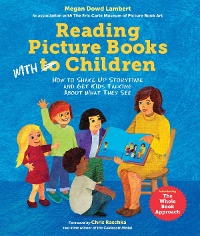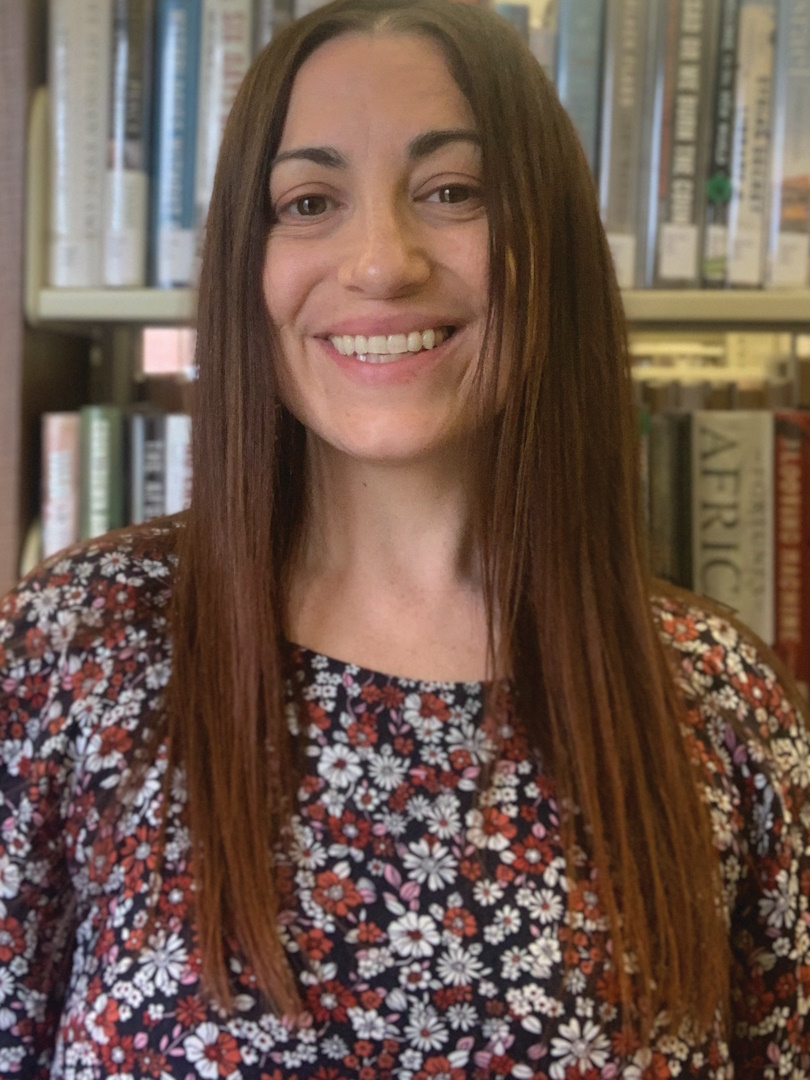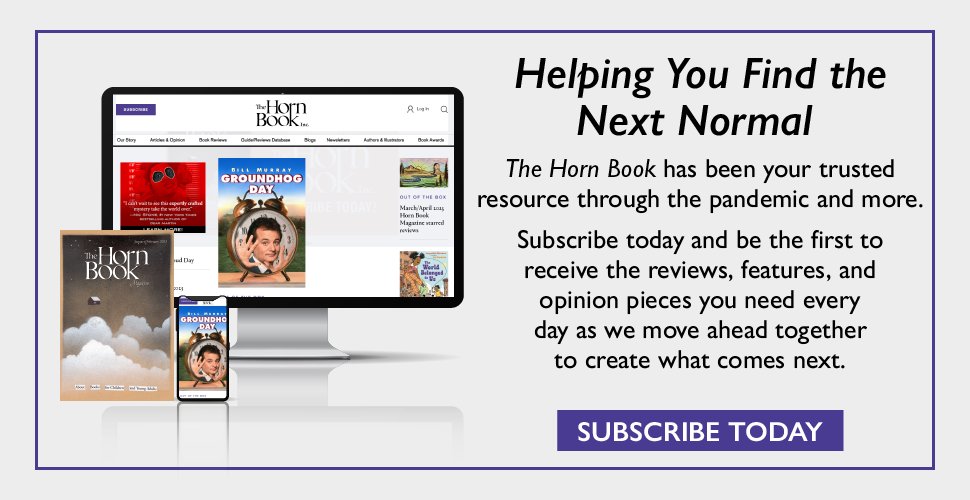Learning to Read Upside Down
Full disclosure: I am no expert at reading upside down. I’m still learning to hold a picture book, extended to the left and slightly diagonal from my sightline. Still rising to the occasion of storytime, a program I inherited in the throes of a pandemic.
Children’s librarian and storytime performer Amanda Lawrence shares her experiences learning the art and brain science behind storytime and why it matters now more than ever.
Full disclosure: I am no expert at reading upside down. I’m still learning to hold a picture book, extended to the left and slightly diagonal from my sightline. Still rising to the occasion of storytime, a program I inherited in the throes of a pandemic. Before that, I taught information evaluation to high-schoolers.
After a series of personal and unfortunate events, I left the world of public education behind to focus on my family and pursue other areas of the field. During that transitional time, many libraries around me closed to the public, offering only virtual and curbside services to those interested.
Several librarians retired in the months following the COVID-19 closures, while others rushed to take their place. I volunteered as tribute when I applied to a part-time public library position that popped up in the small seaside town of southeastern Massachusetts, where I completed my elementary school practicum.
The library had recently reopened to the public when I started working. Six weeks and two storytimes into my new position, the facility’s head children’s librarian left to pursue a directorship. She had six sessions scheduled to conclude before the winter holidays. The program would resume again in January. With no one left to read to them, dozens of eager toddlers stared up at me, hungry for interaction. For the sake of those young patrons crawling around at my feet, I vowed to figure out storytime.
I moved through those six weeks as graceful as a ballerina slipping on a banana peel.
During my first solo storytime, I realized how reliant I am on my audience, their limitless imaginations, and the pages of my pre-selected picture books. I use lots and lots of pre-selected picture books now, in case any of them flop! I learned that the hard way.
We started our adventure with a song, parents and caregivers included, followed by a few rounds of “Head, Shoulders, Knees, and Toes” to get the wiggles out. Sometimes I’d launch right into a book. Other times I’d offer rhymes and magnets on the whiteboard or another song with props, like bells or scarves.
The first time I handed out scarves, a toddler showed me her favorite scarf song about shaking up popcorn kernels “till they POP.” We practiced it together. She was delighted to have helped. When I blanked on our closing song, one parent started singing it for me without skipping a beat. Everyone had something to offer. It relieved me to accept their help.
 Between weekly programs, I set about educating myself in everything storytime. I devoured Reading Picture Books with Children: How to Shake up Storytime and Get Kids Talking About What They See by Megan Dowd Lambert. Lambert offers an interactive approach to storytime that is more child-centered than book-centered. Her focus is on how children interact with the books and art shared during the program. I eagerly offered my new knowledge of Lambert’s observations of Where the Wild Things Are to the first patron who checked it out!
Between weekly programs, I set about educating myself in everything storytime. I devoured Reading Picture Books with Children: How to Shake up Storytime and Get Kids Talking About What They See by Megan Dowd Lambert. Lambert offers an interactive approach to storytime that is more child-centered than book-centered. Her focus is on how children interact with the books and art shared during the program. I eagerly offered my new knowledge of Lambert’s observations of Where the Wild Things Are to the first patron who checked it out!
Watching other people perform storytime was another piece of sage advice from Lambert I adhered to. I started on the internet. Each new storytime demonstrated a swirling combination of performance, patience, and perseverance. An art form of singing, exaggerated movements, and vocal inflection. Something to study. [Ed. note: See also "What Makes a Good Storytime?" by Julie Roach]
I tried scoping out neighboring libraries for ideas, but a pandemic still plagued the world around me.
In-person activities were nonexistent because of their small library spaces and chilly weather. So, my director, who started her career as a youth services librarian, offered to demo a storytime for me.
“Storytime is a great way to get over yourself,” she told me moments before leading our tiny patrons on a particularly animated bear hunt. We packed our backpacks with a thermos of milk, some crackers, and a flashlight, just in case, then set out into the world.
We journeyed through a massive candy factory, swam across a creamy peanut butter river, wiggled through a squishy Jell-O swamp, and trekked into a cold, dark cave. That’s where we finally spotted a bear. I probably don’t have to tell you it had two big green eyes and a fuzzy little tail. Or that we ran all the way back, but we weren’t afraid. Instead, everyone was grinning from ear to ear. Big, bright smiles on the faces of my young patrons are what I aspire to. That set the standard for storytime.
 Once sessions paused for the holidays, I took a deep breath and assessed my situation. I had one month to prepare. I enrolled in a course on Niche Academy created by Betsy Diamant-Cohen, the executive director of Mother Goose on the Loose. She taught me the importance of developing executive function skills in young children.
Once sessions paused for the holidays, I took a deep breath and assessed my situation. I had one month to prepare. I enrolled in a course on Niche Academy created by Betsy Diamant-Cohen, the executive director of Mother Goose on the Loose. She taught me the importance of developing executive function skills in young children.
Children build most of their adult brains in the first five years. Executive function allows them to multitask more effectively, filter out distractions, remember detailed information, and self-regulate their emotions. Storytime activities strengthen these skills through rhymes, repetition, and positive, librarian-led interactions.
As I made my way through the program, I began emailing the course creator. “Imperfect is not the same as worthless,” Dr. Diamant-Cohen stressed when I needed to hear it the most. It’s the joyful moments that children remember, she reminded me. Dr. Diamant-Cohen offered me a treasure trove of musical suggestions, planning templates, and more sage advice.
After the course, I drafted a schedule for January and excitedly planned our first storytime. Then coronavirus cases went through the roof in our community. In-person programming got postponed again.
Like a ballerina on a banana peel, I pivoted, using this time to reflect on what I had learned. I stopped focusing on mastering the program and started thinking about why storytime is essential to my tiny patrons and their caregivers.
Neurologically speaking, storytime helps shape brain development, supports new learning, and encourages cognitive skills, such as writing and reading. Storytime develops a love of books and language. It fosters literacy skills and creates connections between young children, caregivers, and shared real-world experiences. The benefits include increased attention span, early collaborative group interactions, and joy.
Teaching developing minds to associate joy with books is a trait they will not swerve from, even when old. As someone raised in a library, I am living proof of this! I suspect many other librarians would agree.
Storytime is where I know I am encouraging those patron traits, nurturing their learning priorities, and fostering joy. I’ll happily lace up my pointe shoes to pivot with families as they emerge from the clutches of this pandemic and reintegrate their children into society. I won’t be an expert, merely a joyful companion to accompany them.
Let’s all move forward as pioneers on a quest for joy. Pack your backpacks with a thermos of tea, some chocolates, and a flashlight, just in case! Remember, everyone makes mistakes. Be brave, not afraid. We only fail when we stop trying.

ALREADY A SUBSCRIBER? LOG IN
We are currently offering this content for free. Sign up now to activate your personal profile, where you can save articles for future viewing.







Add Comment :-
Be the first reader to comment.
Comment Policy:
Comment should not be empty !!!